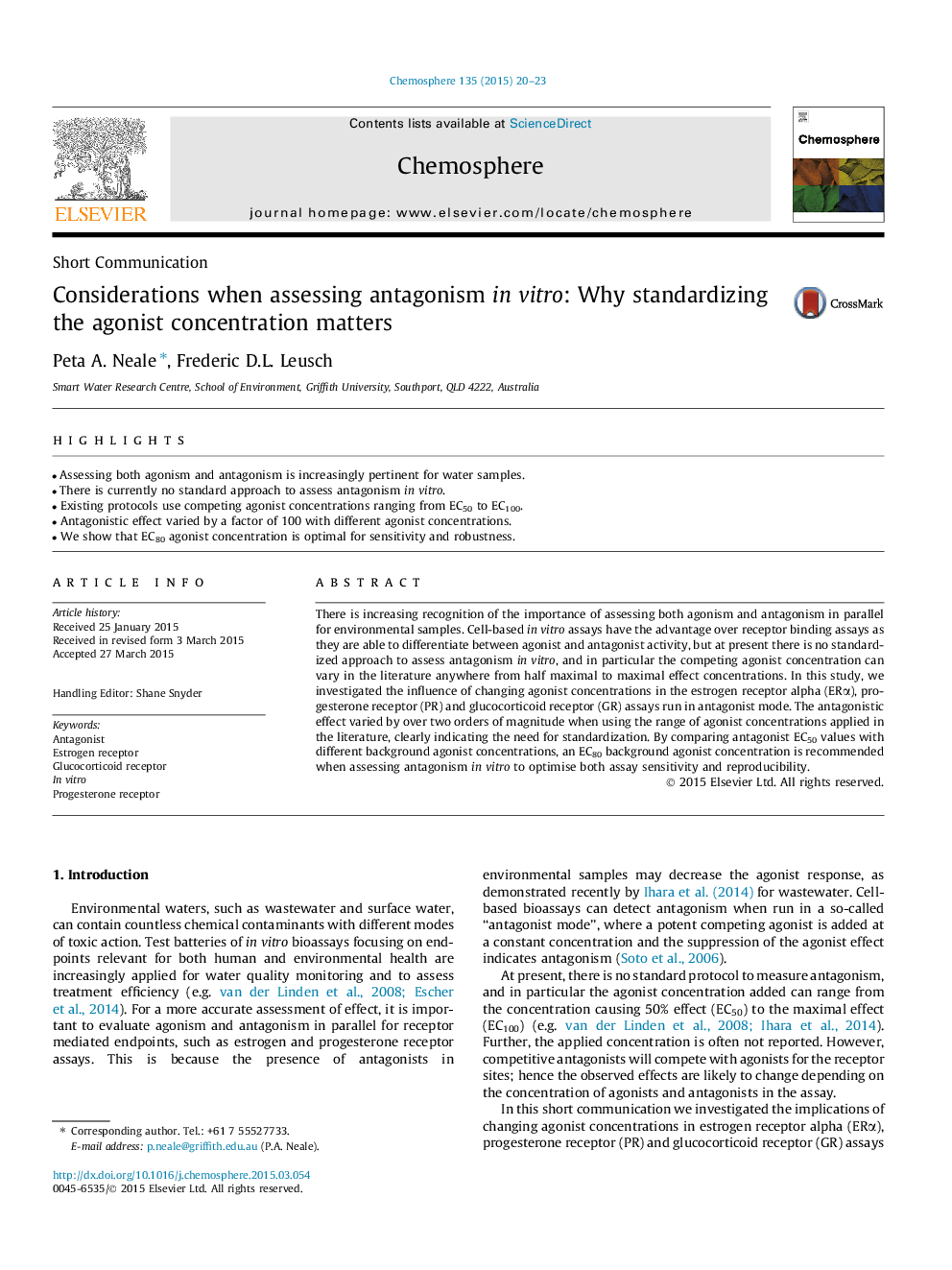| Article ID | Journal | Published Year | Pages | File Type |
|---|---|---|---|---|
| 6307919 | Chemosphere | 2015 | 4 Pages |
Abstract
There is increasing recognition of the importance of assessing both agonism and antagonism in parallel for environmental samples. Cell-based in vitro assays have the advantage over receptor binding assays as they are able to differentiate between agonist and antagonist activity, but at present there is no standardized approach to assess antagonism in vitro, and in particular the competing agonist concentration can vary in the literature anywhere from half maximal to maximal effect concentrations. In this study, we investigated the influence of changing agonist concentrations in the estrogen receptor alpha (ERα), progesterone receptor (PR) and glucocorticoid receptor (GR) assays run in antagonist mode. The antagonistic effect varied by over two orders of magnitude when using the range of agonist concentrations applied in the literature, clearly indicating the need for standardization. By comparing antagonist EC50 values with different background agonist concentrations, an EC80 background agonist concentration is recommended when assessing antagonism in vitro to optimise both assay sensitivity and reproducibility.
Related Topics
Life Sciences
Environmental Science
Environmental Chemistry
Authors
Peta A. Neale, Frederic D.L. Leusch,
